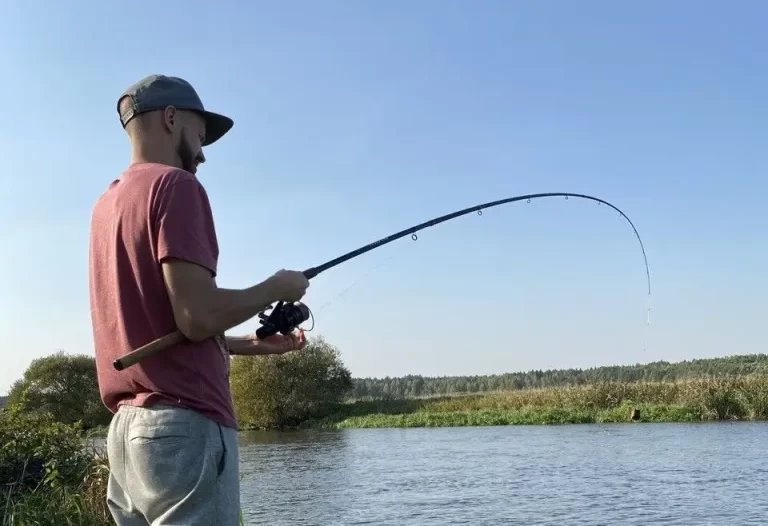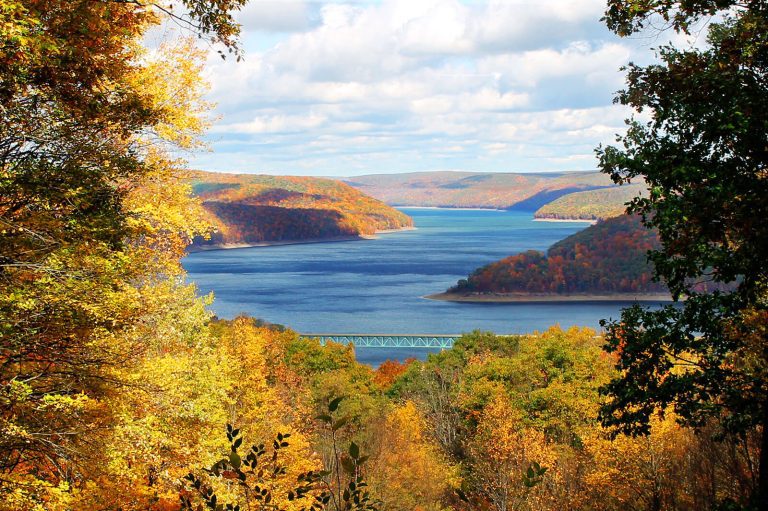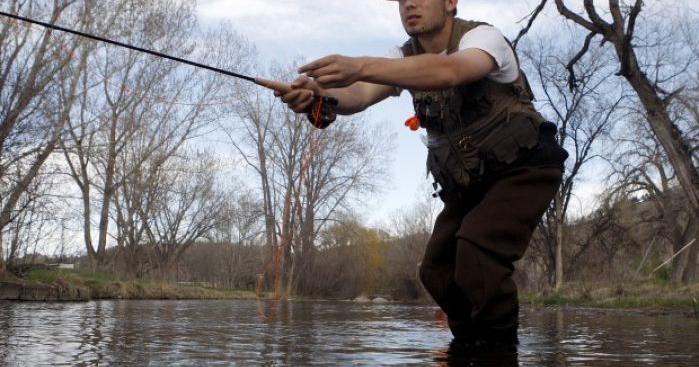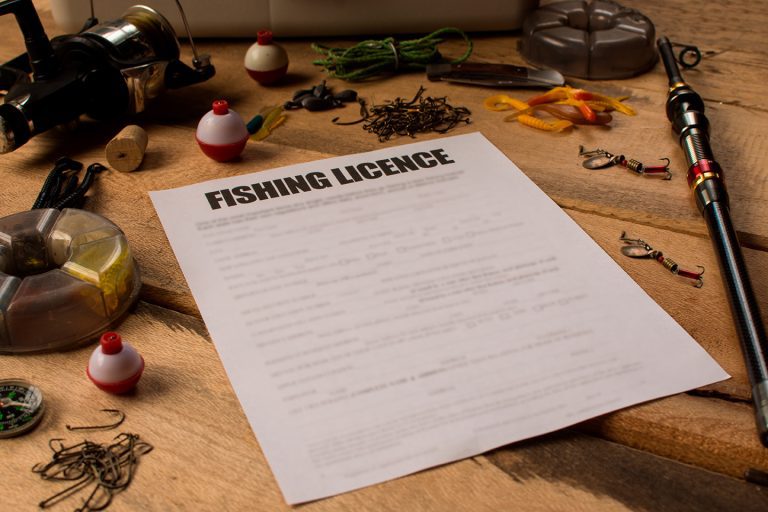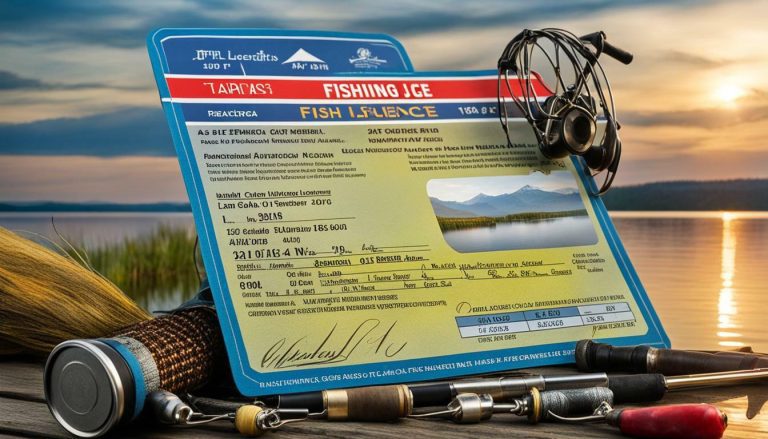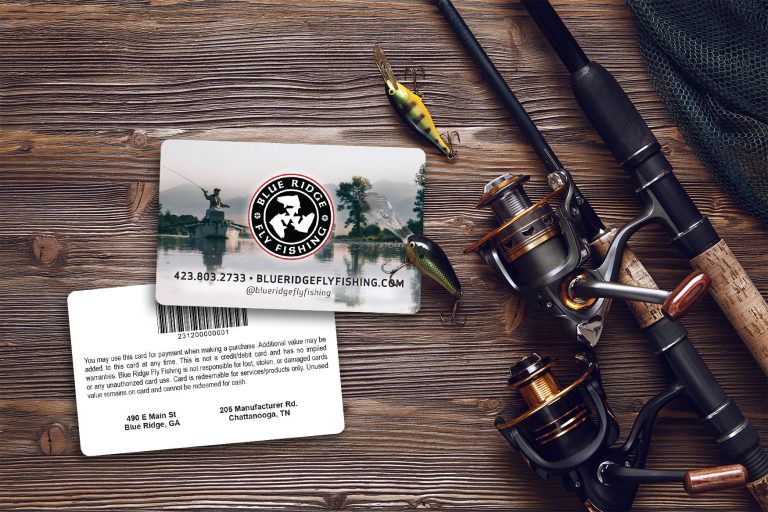With so many immaculate streams, rivers, and lakes housing some of the most sought-after trout species in the United States, Pennsylvania is well-known for its outstanding trout fishing prospects. Whether your level of experience with angling is new or great, this thorough book will provide you insightful analysis of Pennsylvania’s valued trout species, their habitats, and the best methods for catching them.
Summary: This guide covers the three primary trout species found in Pennsylvania – brook trout, brown trout, and rainbow trout. It provides detailed information on their identification, habitats, life cycles, and effective angling techniques tailored to each species. Additionally, it emphasizes the importance of conservation efforts and responsible fishing practices to protect these valuable resources for future generations.
Brook Trout: Pennsylvania’s Native Gem
The brook trout (Salvelinus fontinalis) is Pennsylvania’s official state fish and the only trout species native to the state’s inland waters. These beautifully colored fish, adorned with vibrant spots and distinctive vermiculations (worm-like markings), thrive in the cold, pristine streams and rivers of Pennsylvania’s mountainous regions.
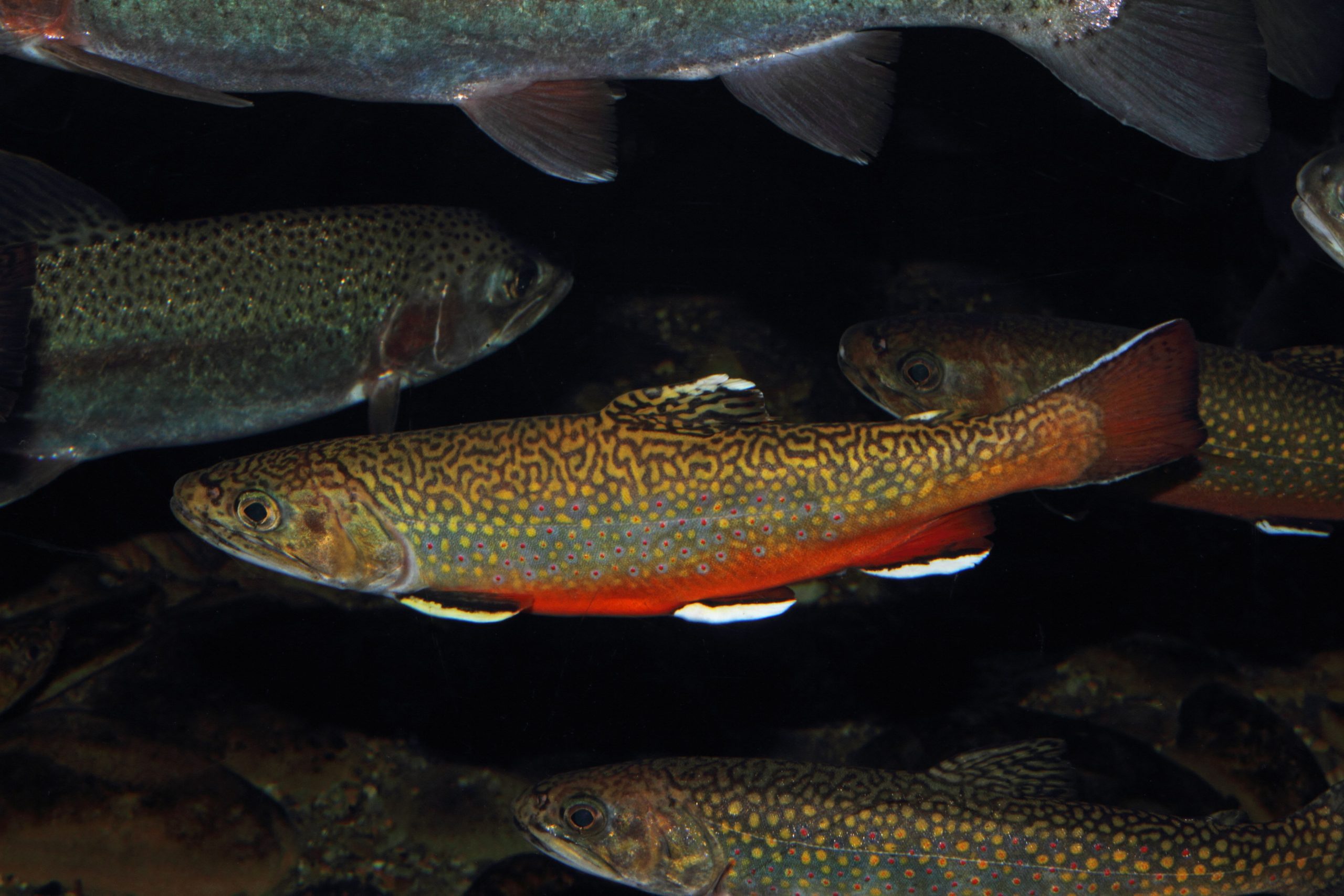

Habitat and Distribution
Brook trout are found in the headwaters of many of Pennsylvania’s streams, preferring well-oxygenated waters with temperatures ranging from 50°F to 65°F (10°C to 18°C). They are particularly abundant in the state’s northern and central regions, where the terrain is rugged and the water quality is exceptional.
According to the Pennsylvania Fish and Boat Commission, brook trout require cooler water than non-native brown and rainbow trout and need exceptionally clean water to thrive. Forested headwater streams that are shaded by large hemlock trees and mountain laurel provide the ideal habitat for these native trout.
Angling Techniques
- Fly Fishing: Dry flies (Adams, Elk Hair Caddis), nymphs, and streamers are effective choices.
- Spin Fishing: Small spinners, spoons, and live bait (where permitted) can be successful.
Tip: Brook trout are opportunistic feeders and will strike a variety of flies, lures, and baits. Experiment with different presentations and retrieves to trigger strikes.
Brown Trout: The Resilient Invader
Introduced to Pennsylvania in the late 19th century, the brown trout (Salmo trutta) has adapted remarkably well to the state’s waterways. These hardy fish are known for their aggressive strikes and powerful runs, making them a favorite among anglers.
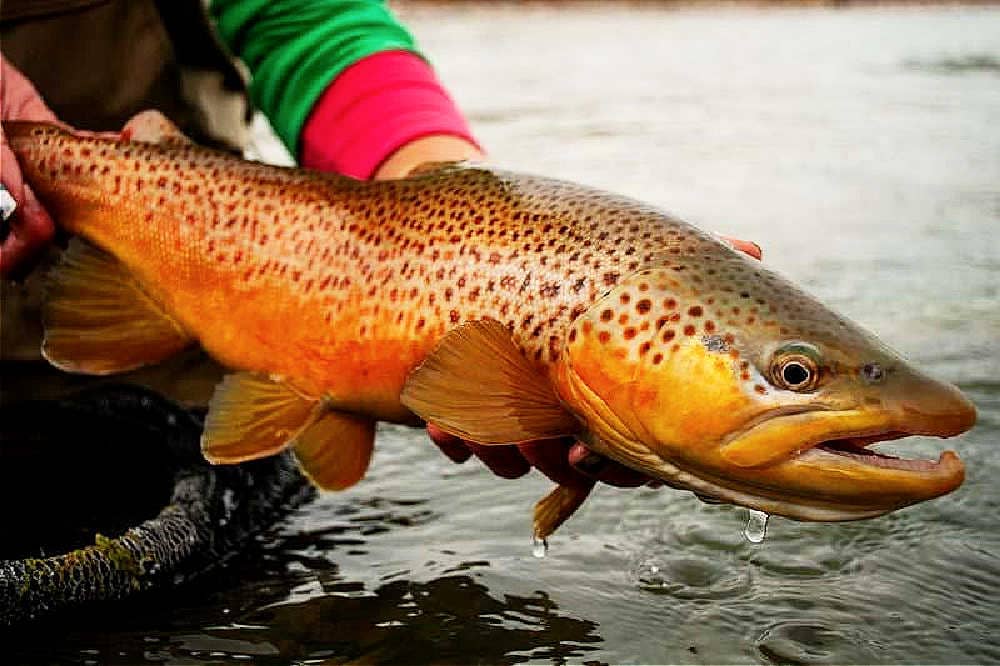

Identification
- Body Markings: Reddish-orange or yellow spots scattered on the sides, with large, dark spots outlined with pale halos on the sides, back, and dorsal fin.
- Distinguishing Features: Lack of distinctive parr marks (present in younger fish), and a squarer tail compared to other trout species.
Habitat and Distribution
Brown trout are widely distributed throughout Pennsylvania, thriving in both cold and cool waters, including streams, rivers, and lakes. They are particularly abundant in the limestone streams of central Pennsylvania, where the water is rich in nutrients and aquatic insects.
According to the Pennsylvania Department of Conservation and Natural Resources, brown trout have a greater diversity of food and feeding opportunities in the valley floor streams, which are generally found away from the streams inhabited by native brook trout.
Angling Techniques
- Fly Fishing: Nymphs, streamers, and terrestrial patterns are effective choices.
- Spin Fishing: Small crankbaits, spoons, and live bait (where permitted) can be productive.
Conservation Note: While brown trout are non-native, they have established self-sustaining populations in many Pennsylvania waterways. Responsible angling practices, such as catch-and-release and respecting spawning areas, are crucial for maintaining these fisheries.
Rainbow Trout: The Versatile Favorite
The rainbow trout (Oncorhynchus mykiss) is a non-native species widely stocked in Pennsylvania’s waters for decades. These colorful fish are prized for their acrobatic leaps and their willingness to strike a variety of lures and baits.
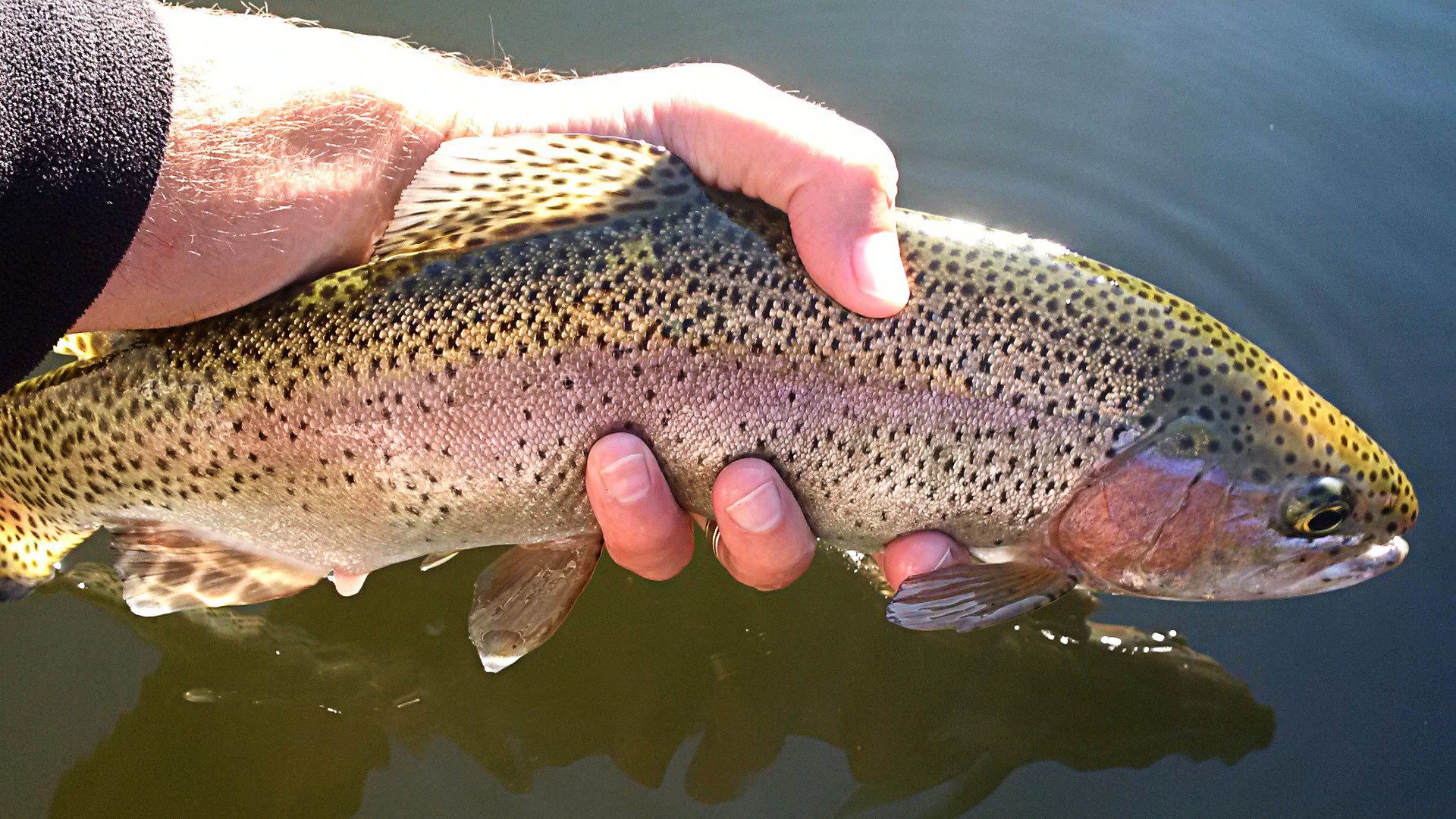

Identification
- Body Markings: Numerous small black spots peppering the sides and tails, with a distinctive red stripe along the sides (may be pale pink or absent in hatchery-raised fish).
- Distinguishing Features: Steelhead (anadromous form) have a steely-gray head and back.
Habitat and Distribution
Rainbow trout are found in many of Pennsylvania’s streams, rivers, and lakes, with the highest concentrations occurring in the stocked waters managed by the Pennsylvania Fish and Boat Commission. They thrive in cool to cold waters, preferring temperatures between 50°F and 65°F (10°C to 18°C).
According to the Pennsylvania Fish and Boat Commission, the agency stocks approximately 3.2 million brook, brown, and rainbow trout annually, providing ample opportunities for anglers to pursue these popular game fish.
Angling Techniques
- Spin Fishing: Small spinners, spoons, and live bait (where permitted) are popular and effective methods.
- Fly Fishing: Nymphs, streamers, and dry flies can be productive, particularly during insect hatches.
Tip: Rainbow trout are opportunistic feeders and will readily strike a variety of presentations. Experiment with different retrieves and vary your offerings to trigger strikes.
Conservation and Regulations
Pennsylvania’s trout fisheries are carefully managed by the Pennsylvania Fish and Boat Commission to ensure their long-term sustainability. Anglers are required to obtain a valid fishing license and adhere to regulations regarding creel limits, size restrictions, and seasonal closures.
It is essential to practice catch-and-release fishing whenever possible, especially when targeting wild trout populations. This helps to preserve these valuable resources for future generations of anglers to enjoy.
Additionally, anglers should be mindful of their impact on the environment and take steps to minimize their footprint. This includes properly disposing of fishing line and other waste, avoiding trampling streamside vegetation, and respecting private property rights.
The Pennsylvania Department of Conservation and Natural Resources also plays a crucial role in conserving Pennsylvania’s trout habitats through various initiatives, such as habitat improvement projects, riparian buffer plantings, and the implementation of best management practices for stream crossings.
Trout Fishing Seasons and Regulations
In Pennsylvania, trout fishing seasons and regulations vary depending on the type of water and the specific location. Here’s a quick overview of the key dates and regulations:
Regular Trout Season
- Begins at 8 a.m. on the first Saturday in April and runs through Labor Day.
- Minimum size: 7 inches
- Fishing hours: 24 hours a day after the 8 a.m. opener
- Creel limits apply to most trout fishing waters
Extended Trout Season
- For all stocked trout waters, streams, lakes, and ponds
- January 1 to February 18, 2024
- 12:01 a.m. the day after Labor Day to December 31
- Creel limits and size restrictions may vary
Mentored Youth Fishing Days
- Held the Saturday before the regular trout season opener
- Allows youth anglers to fish with a mentor before the general opener
It’s important to note that some waters may have special regulations or be designated as catch-and-release areas. Always check the Pennsylvania Fishing Regulations and Laws before heading out to ensure you’re following the rules for the specific water you plan to fish.
Trout Fishing Techniques and Tips
While the specific techniques for catching each trout species may vary, there are some general tips and tactics that can improve your success on Pennsylvania’s waters:
Bait and Lures
- Live bait: Minnows, worms, salmon eggs, corn, cheese, and prepared baits
- Lures: Spinners, small crankbaits, spoons, and flies (dry, nymph, streamer, and terrestrial patterns)
Tackle
- Rod: 6-9 foot light action spinning or fly rod
- Reel: Small/medium sized spinning reel or fly reel
- Line: 2-8 lb. test monofilament or fly line
- Hooks: Size 6-14
- Lures: 1/32 to 1/8 oz.
Fishing Times
- Spring: Mid-day
- Summer: Early morning and early evening
Techniques
- Drift fishing with bait or lures along the bottom
- Fly fishing with dry flies, nymphs, streamers, and terrestrials
- Spin fishing with spinners, spoons, and crankbaits
- Live bait fishing (where permitted)
Stealth and Presentation
- Approach streams and pools quietly to avoid spooking fish
- Use natural presentations and drift baits/lures naturally with the current
- Match your tackle and lures to the water conditions and insect hatches
Stream Craft
- Read the water and target areas with depth, cover, and current breaks
- Explore different sections of a stream or river to locate active fish
- Be mindful of your surroundings and respect private property
By following these tips and techniques, you’ll increase your chances of success and enjoy some of the best trout fishing opportunities in the country.
Top Trout Fishing Destinations in Pennsylvania
Pennsylvania is home to countless streams, rivers, and lakes that offer exceptional trout fishing opportunities. Here are some of the top destinations to consider:
Penns Creek (Centre County)
- One of the state’s premier limestone streams
- Known for its abundant wild brown trout population
- Catch-and-release, fly-fishing only section
Allegheny River (Warren County)
- Renowned for its world-class steelhead (rainbow trout) fishing
- Best from late fall through spring
- Drift fishing and fly fishing are popular techniques
Yellow Creek (Bedford County)
- Designated as a Catch-and-Release Fly-Fishing Only area
- Excellent wild brown trout fishing
- Scenic stream in a remote setting
Bald Eagle Creek (Centre County)
- Stocked with rainbow and brown trout
- Also supports a healthy wild brown trout population
- Diverse fishing opportunities for all skill levels
Lackawanna River (Lackawanna County)
- Stocked with rainbow, brown, and brook trout
- Excellent fly fishing and spin fishing opportunities
- Scenic setting in the Pocono Mountains region
These are just a few of the many outstanding trout fishing destinations in Pennsylvania. With a little research and exploration, you’re sure to find a stream, river, or lake that suits your preferences and skill level.
Conclusion
Pennsylvania’s trout fishing opportunities are truly world-class, offering anglers the chance to pursue a variety of prized species in some of the most scenic and pristine waterways in the eastern United States. Whether you’re a seasoned angler or just starting out, this guide has provided you with the essential information you need to embark on a successful and rewarding trout fishing adventure in the Keystone State.
Remember to always prioritize conservation efforts, respect the regulations, and cherish the opportunity to experience the beauty and tranquility of Pennsylvania’s trout streams and lakes. Tight lines and happy fishing!
